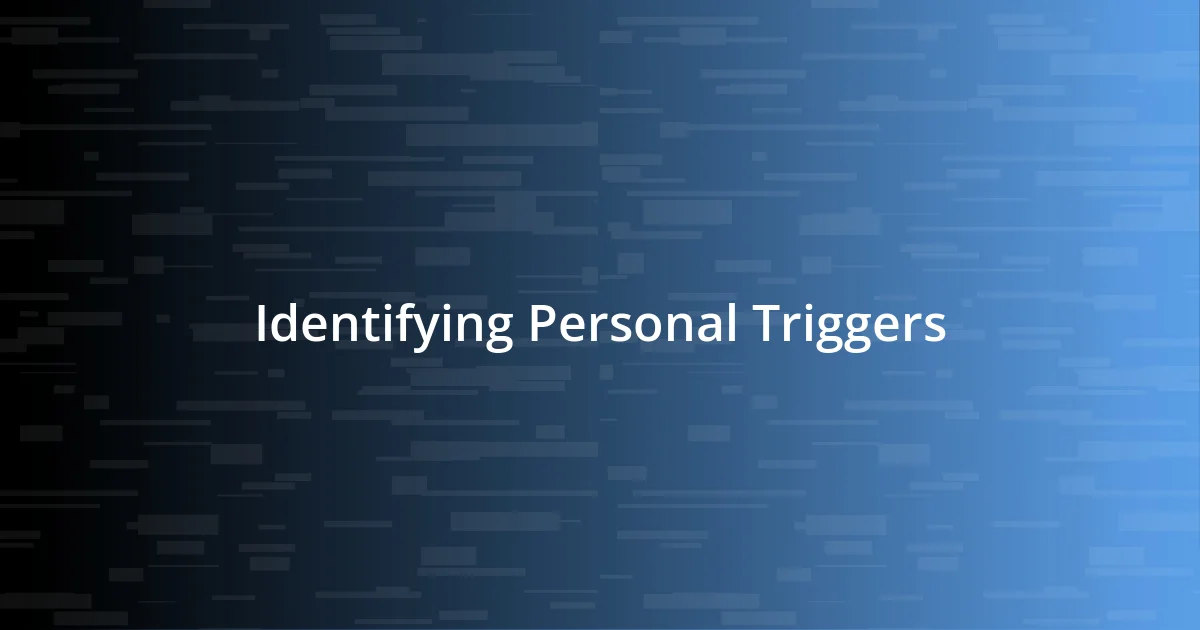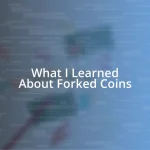Key takeaways:
- Recognizing personal triggers and emotional responses can help manage Market FOMO, leading to more informed and calm decision-making.
- Developing a strategic plan and regularly reassessing it allows for adaptability in investing, reducing the chaos of impulsive decisions.
- Building a support network enhances knowledge sharing and emotional resilience, fostering growth and confidence in investment choices.

Understanding Market FOMO
Market FOMO, or the Fear of Missing Out, can be an overwhelming feeling that grips many investors. I remember my first taste of it when I watched a friend double his investment in cryptocurrency overnight. Seeing that sharp rise made me question my choices and wonder if I was missing some golden opportunity. Have you ever felt that knot in your stomach when you see others profiting while you stand on the sidelines?
It’s fascinating how social media amplifies this fear. As I scrolled through platforms, I noticed the buzz around trending stocks that, at first glance, seemed to be skyrocketing with no end in sight. The emotional tug of wanting to jump in was intense—like a siren’s call pulling me toward a rocky shore. Asking myself if waiting was a prudent choice or a folly became a constant internal battle.
Reflecting on my experience, I realized that FOMO often blinds us to our own investment strategies. I rushed into a couple of trades driven by anxiety, only to face disappointing results. It taught me the importance of staying true to my research and planning, rather than being swept away by market hype. How do you navigate that tumultuous sea of emotion while making sound financial decisions?

Identifying Personal Triggers
Identifying personal triggers is crucial in managing Market FOMO. I’ve noticed that for me, it often spikes during moments of uncertainty. When I see a sudden surge in stock prices, my heart races, and I feel an urge to act impulsively. I learned to recognize these feelings, much like how one might spot a familiar friend – they arrived with unease and excitement simultaneously.
In contrast, I found that my triggers diminished significantly after searching out reliable information. When I began to compile data on my investments, the frantic pull of FOMO quieted. Suddenly, I recognized that patience didn’t equate to missing out; it meant making informed choices. This awareness helped me distinguish between the rush of action and the calm of strategy. It was truly liberating.
I believe keeping a journal helped me identify my personal triggers even further. Reflecting on my emotional responses after each investment decision provided valuable insights. I began to note patterns; we often overlook our emotions, but writing them down allowed me to analyze and understand my behavior better. What if you tried a similar approach—would it empower your decision-making process too?
| Identifying Triggers | Responses |
|---|---|
| Market Surges | Impulsive Action |
| Informed Research | Calm Decision-making |
| Emotional Reflection | Insightful Analysis |

Assessing Risk and Reward
As I dove deeper into the world of investing, I quickly learned that assessing risk and reward is essential. It’s all about evaluating the potential gains against the likelihood of losses. For instance, when I contemplated investing in a tech startup, I didn’t just look at its skyrocketing stock price; I also assessed the company’s fundamentals, the market competition, and my own risk tolerance. This holistic view helped me decide whether the potential reward was worth the risk.
- Understand your risk tolerance; know how much you can afford to lose.
- Analyze the potential reward versus the risk involved.
- Research the asset thoroughly; look for solid fundamentals.
- Diversify your investments to mitigate potential losses.
- Reflect on past experiences to guide your decision-making.
Sometimes, simply making a pros and cons list regarding an investment can clarify my thinking. I remember weighing the pros of joining a booming biotech company against the cons of an uncertain market. The reality check made me realize that a hasty decision driven by excitement could lead to more disappointment than success. Balancing my emotional impulses with analytical insights became my guiding principle in navigating investment decisions. In sharing my journey, I hope to inspire a more thoughtful evaluation for you too.

Developing a Strategic Plan
Developing a strategic plan requires a clear vision of what you want to achieve. I learned this firsthand when I crafted a detailed outline of my investment goals, breaking them into achievable milestones. This helped me remain focused, preventing the chaos of FOMO from diverting my attention.
One key aspect I found essential was regular review and adjustment of my plan. I’ll never forget the time a major market shift caused me to rethink my entire strategy. I realized that a rigid plan might work initially, but being flexible allowed me to adapt to new information and market conditions. How many of us cling to outdated strategies simply because we are afraid of change?
Incorporating a regular schedule for reflection became a game changer. Each month, I set aside time to analyze my investments and recalibrate my approach if necessary. This practice instilled confidence, as it turned out that being proactive helped me feel more in control. Have you tried regularly revisiting your strategy? You might find it empowers you to seize opportunities instead of fearing missing out.

Practicing Mindfulness Techniques
Practicing mindfulness techniques was essential for me as I navigated the whirlwind of market FOMO. I remember sitting quietly, focusing on my breath and letting the noise of the market fade away. This simple act of grounding myself helped me become aware of my thoughts and feelings, making it easier to recognize when excitement was clouding my judgment.
An impactful technique I often used was visualization. I would close my eyes and imagine myself making investment decisions calmly and rationally. This mental exercise helped reinforce my commitment to thoughtful choices, even when the market was buzzing around me. Have you ever tried visualizing your goals? It’s incredible how such a practice can create a sense of purpose and clarity.
I also found journaling to be a powerful mindfulness tool. Taking a few minutes each day to write down my thoughts, fears, and triumphs transformed my emotional chaos into actionable insights. Reflecting on why I felt compelled to chase certain investments often revealed underlying insecurities. By identifying these feelings, I became more adept at managing them, which ultimately led to better decision-making. Isn’t it fascinating how simply putting pen to paper can illuminate our paths?

Building a Support Network
Building a support network was a vital step in my journey, and I can’t stress enough how much it transformed my approach to investing. There was a time when I felt isolated, constantly second-guessing my decisions. But once I began to connect with other investors, whether through online forums or local meetups, I realized how invaluable it was to share experiences and insights. Have you ever felt that sense of camaraderie when discussing shared interests? It’s genuinely uplifting.
One memorable experience was joining an online investment group where members openly shared their strategies and fears. I remember feeling hesitant at first, worried my questions might appear naive. But to my surprise, everyone was welcoming and supportive. This network not only provided me with practical advice but also offered emotional support. It made me wonder: how much stronger could I be with a solid network behind me?
Creating a support system meant surrounding myself with diverse perspectives. I learned that differing opinions are beneficial; they challenge my viewpoints and help refine my strategies. One instance that stands out is when a fellow investor suggested an alternative approach I hadn’t considered. Initially resistant to the change, I eventually tried it and found success. Could it be that some of our best insights come from others who think differently than we do? The key takeaway here is that I no longer walk this path alone—having a trusted support network has fueled my growth and resilience as an investor.

Reflecting on Past Experiences
Reflecting on my past experiences has been like piecing together a complex puzzle. There are moments I can’t shake off—like that time I rushed into a stock purchase driven purely by market buzz without doing my due diligence. Looking back, the regret wasn’t just about the monetary loss; it revealed to me how susceptible I was to external influences, a realization that prompted me to dig deeper into my motivations.
One thing I’ve learned is that failure often serves as the best teacher. I remember a period when I underestimated the impact of my emotions on my investment choices. It was during a market downturn when anxiety crept in, causing me to sell prematurely. Each time I reflect on that moment, I can nearly feel the sinking sense of panic I experienced. That emotional rollercoaster taught me the necessity of steadying myself before making critical decisions in the face of uncertainty.
It’s interesting how our past shapes our present decisions, isn’t it? Each lesson I’ve taken to heart made me more adept at recognizing patterns and understanding the emotional landscape of investing. I reflect on these experiences often—not just to learn, but to remind myself how far I’ve come. The challenges I faced were instrumental in transforming my approach, making me more resilient and better equipped for future opportunities.














